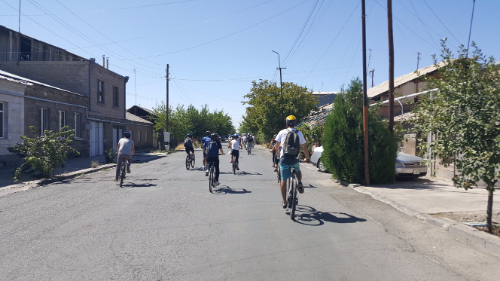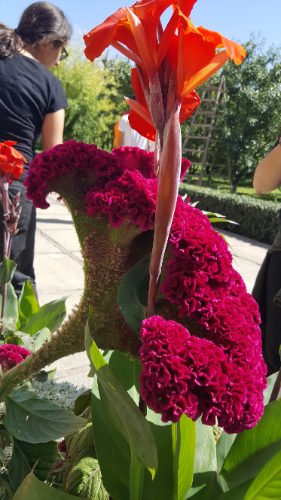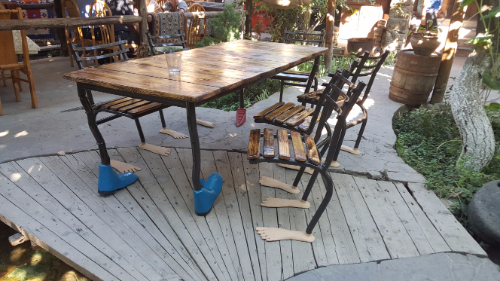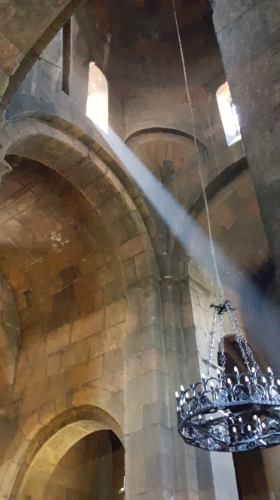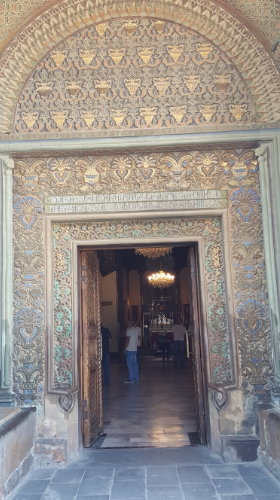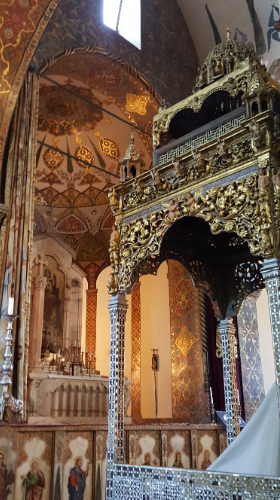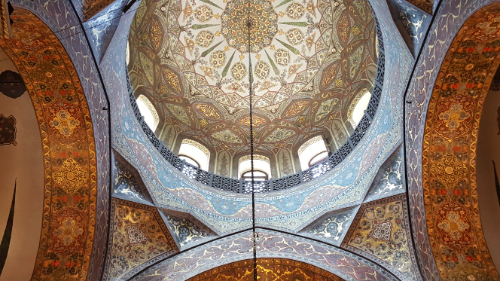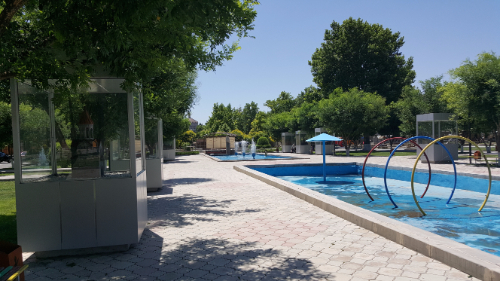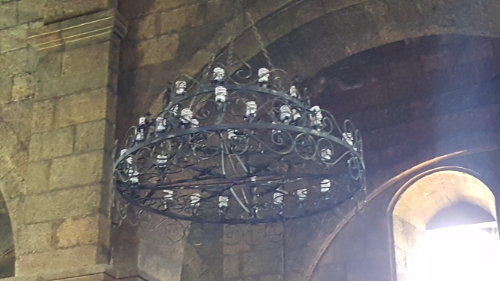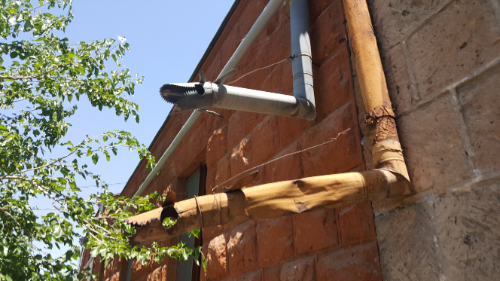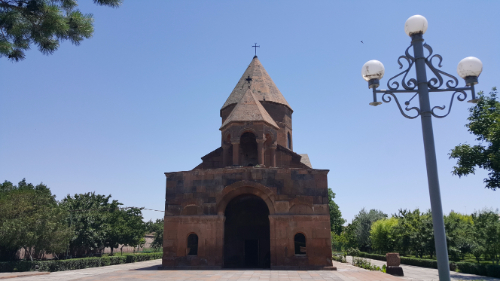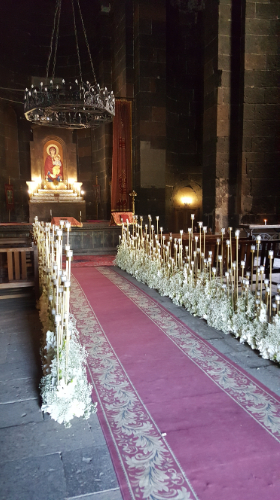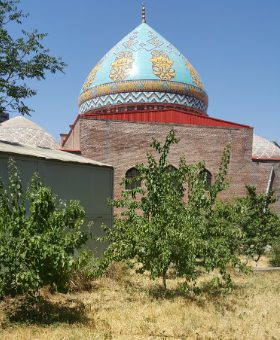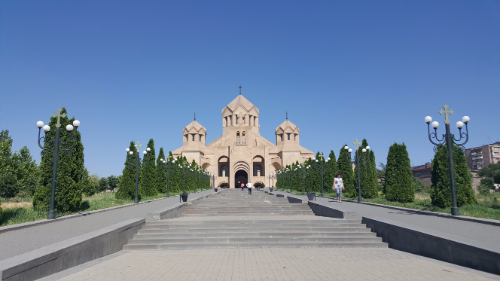After the Day 3 marathon, I think everyone was happy with our shorter Day 4 plans. At the very least, everyone was happy about the later departure time – 10AM instead of 8. The schedule for the day was Sardarabad and Etchmidazin/the Vagharshapat churches. I was looking forward to Sardarabad because I hadn’t been there yet, and I was looking forward to the rest of the day because I actually know something about the churches we were visiting and could be a better tour guide than some of the other days.
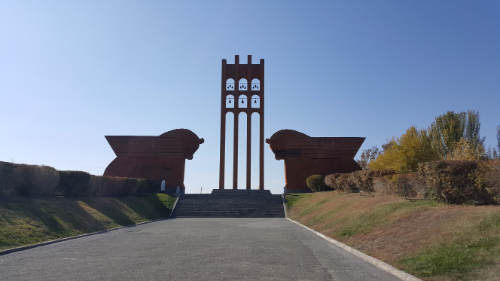
Sardarabad, an Armenian town west of Yerevan, is often considered to be the site of the most important battle in Armenian history. In January of 1918, the new Bolshevik Russian government ordered the withdrawal of Russian troops from the Caucasus. Ottoman Turkey saw this as an opportunity to not only complete their seizure of Western Armenia but to take over Eastern Armenia as well. This would have meant the complete the destruction of the Armenian nation.
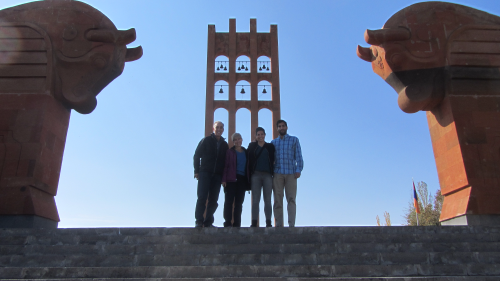
The Armenian army rushed to deploy forces to hold the positions formerly defended by the Russians. Only a fraction of the historical Armenian homeland remained unconquered by the Ottoman Empire, and hundreds of thousands of Western Armenian refugees had fled to safety there. In May, Ottoman forces marched into Armenia and attacked modern-day Gyumri. After Gyumri (then called Alexandropol) fell, the army turned towards Yerevan. They launched three simultaneous attacks in Sardarabad, Karaklisa (now Vanadzor), and Bash Abaran.

The Armenian forces were vastly outnumbered, and a massive civilian recruiting effort was organized. There’s a story about the Catholicos at the time refusing to leave Etchmiadzin when people wanted to relocate him to safety. He said that he would fight if it came to that, and he ordered all of the church bells in the valley to ring for six days to recruit more people. People, regardless of age or occupation, volunteered to fight and were organized into civilian units. Women and children helped in various capacities as well, and I have no doubt that many even ended up in combat.
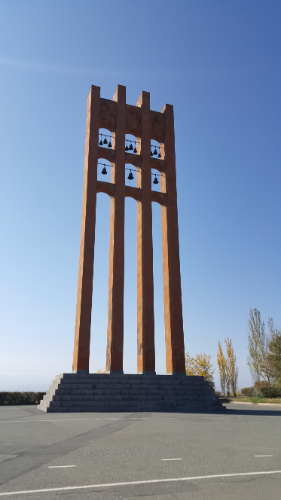
Against all odds, the three battles resulted in Armenian victories, halting the advance of the Ottoman army and preserving the last bit of Armenia. They (once again, the mysterious “they” who have an opinion about everything) say that what the Armenian volunteers lacked in training, they made up for in determination and passion. For them, it was personal. They were fighting to protect their families and for the survival of Armenia.
The thing about war is that even when you win, you still lose. Thousands of lives were lost during the battles, and I’m sure that the families of those people didn’t much feel like celebrating. However, due to the courage and sacrifice of the army and those volunteers, Armenia exists today.
The memorial complex was built for the 50th anniversary of the battle, in 1968, and it’s kind of amazing. You drive straight at it on your way there and have an epic view of the bulls and the belfry. The bulls represent the united strength and persistence of the Armenian people. The bells are a shrine to those who were killed in battle and now represent victory bells. The eagles lining the path to the memorial wall are standing guard over the future of the Armenian people. The memorial wall depicts the battle (very symbolically I think because we totally didn’t get it) and the rebirth of the Armenian people. Finally, the museum is designed like an Armenian medieval fortress. All of the windows face interior courtyards except for two – one facing Aragats and the other facing Ararat. Everything is made from red tuff and is gigantic. On days when the sky is blue, the contrast between the red stone and the blue sky is pretty awesome.
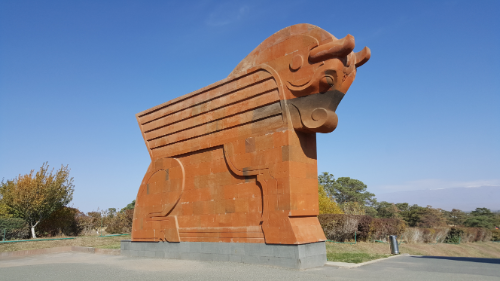

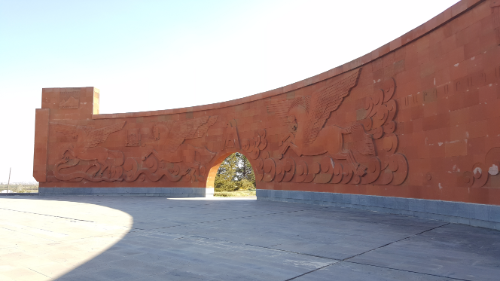

The museum was built later and has two parts: the majority of the museum is filled with various historical and cultural objects (ethnography museum), similar to the Armenian History Museum in Yerevan, and the other part is dedicated to the battle. We went on a tour of the Ethnography Museum, and it was exhaustingly long but also very well done. It’s one of those places that’s almost not even worth visiting without doing the tour because you can walk around and completely miss the important things without realizing it.
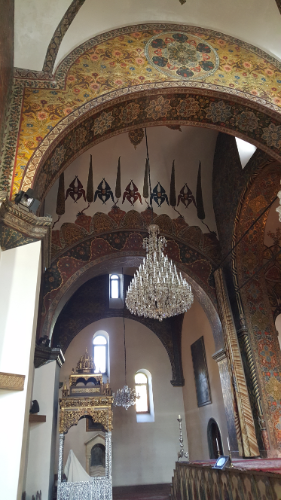
By the time we left the museum, I think everyone was ready for a nap, but we had more things to do! We drove to Etchmiadzin, and I walked everyone around my favorite parts of the complex. We also went to the museum inside Etchmiadzin which I was excited about because they have (supposedly) a piece of the cross, a piece of Noah’s Ark, and the spear that pierced Jesus’s side when he was on the cross. Each of these relics is one of many in the world with similar claims attached. The cross and Noah’s Ark could at least physically have multiple pieces in different places, but the spear is another matter. There can be only one. Obviously, all of the others are fakes and the Armenia one is real. It’s said to have been brought by the Apostle Thaddeus to Armenia and was housed in Geghard Monastery for a long time before ending up in Etchmiadzin.
The rest of the museum was less exciting. Lots of fancy Catholicos clothing and other reliquaries that didn’t have much information about what was inside them. Honestly, the museum could use a good labeling. I thought it was cool anyway and the rooms were beautiful, but I also wouldn’t have minded actually knowing what we were looking at.

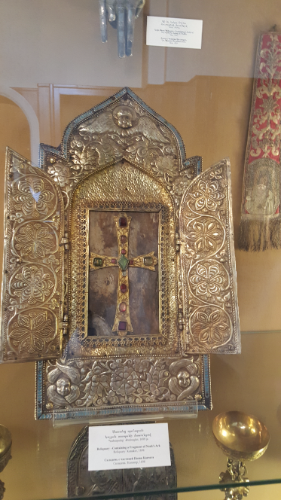
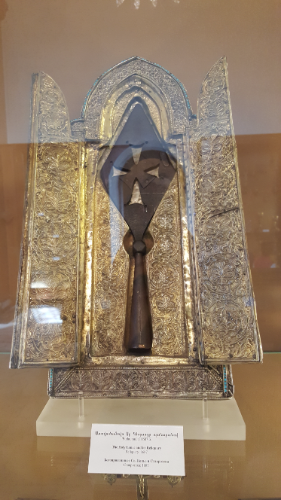
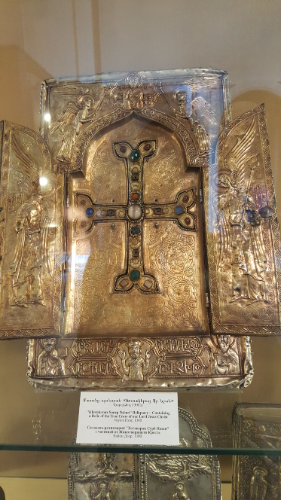
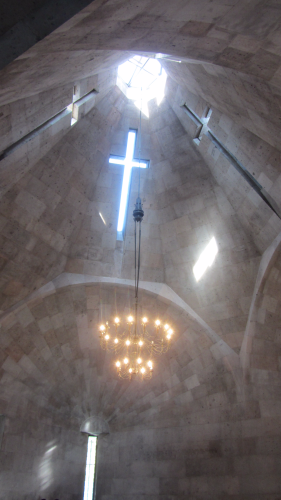
From there, we walked to Saint Gayane Church and later drove to Saint Hripsime. There were weddings happening at both churches, so we pretended we were invisible and tried to stay out of everyone’s way. It was only semi-successful because at Saint Hripsime, if you want to see the tomb and the stones that supposedly stoned her, you need to get all the way to the front of the church. Not easy to do without being noticed. Anyway, I’ve written in great detail about the stories of Saint Gayane and Saint Hripsime and the origins of Etchmiadzin, so if you want a refresher, you can check out those old posts HERE.
We were planning on stopping by the ruins of Zvartnots Cathedral on the way back to Yerevan and decided to skip it because everyone was about ready to pass out. I think we made the right choice in the moment, but it’s still on my list. Maybe I’ll manage to get there one of these days!

